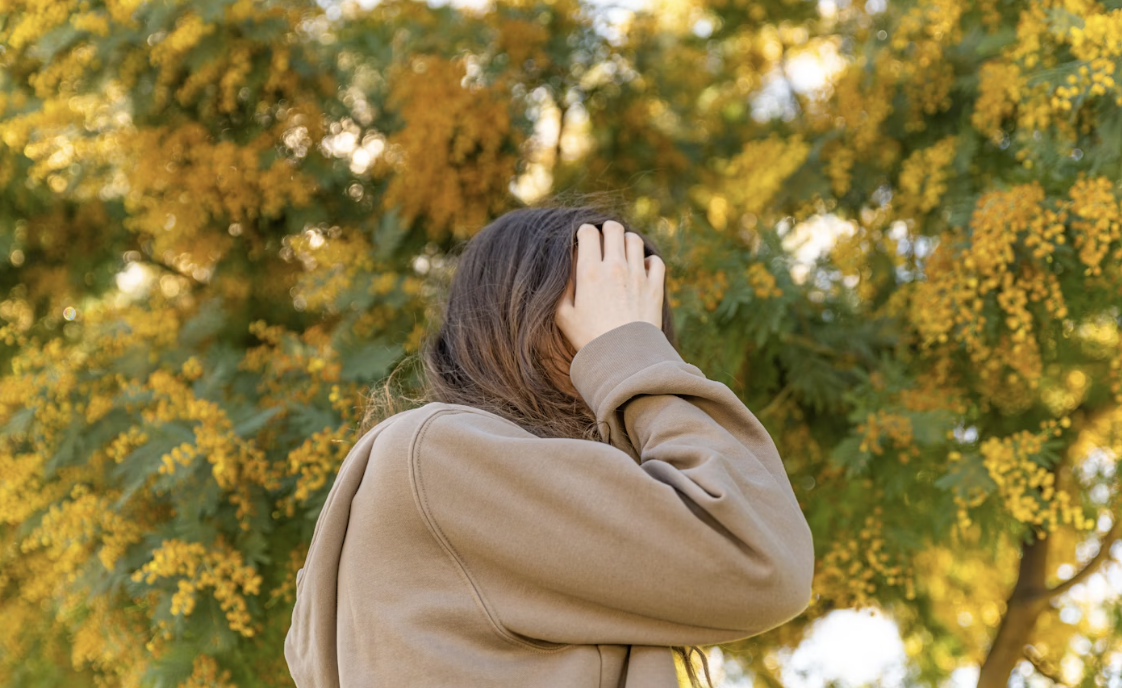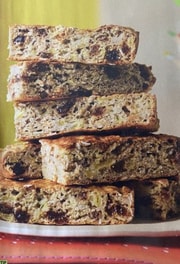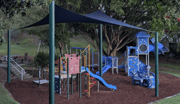
Spring has always been a mixed blessing in Australia, but this year brings sobering news for anyone who's been reaching for the tissues more often.
We're facing what experts are calling the most challenging hay fever season on record, with a staggering one in four Australians now battling allergic rhinitis—that's the medical term for hay fever and year-round allergies.
If you've noticed your sneezing fits lasting longer or your eyes streaming more than usual, you're not imagining things. The statistics tell the story: allergic rhinitis rates have skyrocketed from 15 per cent of Australians in 2008 to 24 per cent today. That means nearly 6 million of us are dealing with runny noses, itchy eyes, and that general feeling of being under the weather when the weather should be at its most glorious.
'In Australia, we've seen an increase in the duration of the pollen season, with the seasons lasting longer into summer and autumn'
In this article
Why this season is particularly brutal
Climate change hasn't just affected our weather patterns—it's fundamentally altered when and how plants release their pollen. Professor Janet Davies from the National Allergy Centre of Excellence explains that environmental changes are not only making more people sensitive to pollen allergens, but the seasons themselves are lasting longer, stretching well into summer and autumn.
For those of us who've been managing allergies for years, this extended timeline means there's less respite. What used to be a few challenging weeks in September and October can now drag on for months.
Are you dealing with seasonal or year-round allergies?
Before you start rearranging your entire home (though we'll get to some simple changes shortly), it's worth understanding what type of allergy you're actually dealing with. If your symptoms only flare up during spring and summer, you're likely dealing with seasonal allergic rhinitis caused by pollen from grasses, weeds, and flowering plants. But if you're battling symptoms year-round, particularly worse in the mornings or evenings indoors, the culprits are probably dust mites, mould, or pet dander.
Take Micaela Diaz from Brisbane, who deals with both seasonal hay fever and dust mite allergies. 'It's incredibly debilitating,' she says. 'When it's really bad, I get swelling of my face and my eyes.' Her experience highlights how staying on top of home cleaning and taking preventative measures can make a real difference.
Australian hay fever by the numbers
24 per cent of Australians now suffer from allergic rhinitis (up from 15 per cent in 2008)
Affects 1 in 5 adults and 1 in 10 teenagers
ACT has the highest rate in Australia at 29 per cent
About 80 per cent of people with asthma also have allergic rhinitis
According to Adjunct Associate Professor Joy Lee from Melbourne's National Allergy Centre of Excellence, getting the right diagnosis is crucial: 'You don't want to go and make huge changes to your home, and [find] it's not actually that allergen that's causing problems.'
Simple strategies to reduce dust in your home
The good news is that you don't need expensive equipment or major renovations to make your home more comfortable. Dr Lee recommends starting with the basics: a clean, dry, well-ventilated home.
'You're never going to be able to completely remove yourself from all allergens,' she says. 'We can't seal ourselves up in a little bubble; it's just about trying to reduce the load.'
Your bedroom should be priority number one
Since we spend about eight hours a day in our bedrooms, this is where small changes can make the biggest difference. Weekly vacuuming and dusting are ideal, but here's an important tip: if you're the one with allergies, get someone else to do the vacuuming and stay out of the room for 20-30 minutes afterwards. Vacuuming actually stirs up dust initially before settling.
When cleaning, skip the feather dusters—they just spread dust mites around. Instead, use slightly damp cloths or electrostatic dusters that actually capture the particles.
Hot water is your friend
Washing bedding in hot water (60°C or hotter) weekly kills dust mites effectively. Follow up with a hot tumble dry cycle. If your sheets and blankets can't handle hot water, the freezer method works too—pop items in overnight to kill dust mites, which love warm, humid conditions.
Dust mite covers for mattresses and pillows are worth the investment. These impermeable barriers create a physical wall between you and the millions of tiny creatures that naturally live in bedding.
Winning the battle against pollen
If you're in the thick of seasonal allergies right now, these strategies can provide immediate relief:
Keep the outdoors outside
On high pollen days, resist the urge to throw open windows for 'fresh air.' Keep doors and windows closed when pollen counts are high—you can check current levels using the AirRater app or Pollen Forecast websites.
Your air conditioner becomes a valuable ally here. Even if you're not cooling the house, running it on fan mode with clean, high-quality filters helps trap airborne allergens before they settle throughout your home.
Essential pollen-proofing steps
- Check daily pollen forecasts before opening windows
- Dry clothes indoors or in dryer on high pollen days
- Shower and change clothes after spending time outdoors
- Use air conditioner on fan mode to filter air continuously
- Keep car windows closed and use recirculated air when driving
Timing is everything
Micaela swears by drying clothes and sheets in the dryer or hanging them inside on windy days. 'Just so that you can get sleep without rolling around in pollen,' she explains. It's a simple change that can make the difference between a restful night and hours of tossing and turning.
Climate control expert Goran Surbevski recommends using programmable thermostats with humidity control. Running your air conditioner on dry mode not only cools efficiently but removes moisture that dust mites thrive in.
Did you know?
Did you know?
About 80 per cent of people with asthma also have allergic rhinitis. If you have both conditions, treating your hay fever can significantly improve your asthma symptoms. This is particularly important for seniors, as untreated allergic rhinitis can worsen breathing difficulties.
Managing pet allergens without giving up your furry friends
Let's be realistic—for many Australian seniors, pets aren't just animals, they're family members. Dr Lee acknowledges this reality: 'Pets are often like part of the family, so people often aren't willing to not have an animal.'
Source: 9 News Australia / Youtube.
The challenge is that pet dander (microscopic flakes of dead skin and fur) can linger for months, even after a pet is removed from the home. But regular maintenance can help:
- Use lint rollers on furniture and flat surfaces weekly
- Vacuum soft furnishings like sofas regularly
- Wash pet bedding, toys, and accessories frequently
- Clean heating and cooling vents so they don't circulate dander throughout the house
When home remedies aren't enough
While keeping a clean home helps enormously, Dr Lee emphasises that combining these efforts with appropriate medication often provides the best results. 'The steroid antihistamine combinations are probably one of the most effective preventative treatments out there,' she says. 'But they do have to be started for about a week or two and used regularly for them to have the best effects and benefits.'
The key word here is 'preventative.' Rather than waiting until you're miserable, starting treatment before your typical allergy season can help you stay ahead of symptoms.
Getting professional help
With allergic rhinitis being one of the most common allergic conditions in Australia, affecting one in five people, you're definitely not alone in seeking help. Your GP can arrange skin prick tests or blood tests to identify specific triggers, which takes the guesswork out of management strategies.
For those with severe symptoms, immunotherapy—involving small doses of grass pollens delivered by injection, spray, or drops under the tongue—can provide longer-term relief, though accessibility and cost remain considerations for many Australians.
Looking ahead
With climate change continuing to extend pollen seasons and more Australians developing allergies each year, these home management strategies become increasingly valuable. The goal isn't to achieve a perfectly sterile environment—that's neither possible nor necessary. Instead, it's about creating a comfortable refuge where you can breathe easier and sleep better.
Remember, this is general information only. For detailed personal advice, particularly if your symptoms are severe or persistent, consult your GP or an allergy specialist who knows your medical history.
What strategies have worked best in your home for managing allergies and hay fever? Have you noticed this season being particularly challenging compared to previous years? We'd love to hear about your experiences and any tips that have made a real difference in the comments below.
Primary Source
https://www.abc.net.au/news/2025-10...n-your-home-allergy-hayfever-season/105887900
Nothing to sneeze at: why so many Australians suffer from hay fever—National Allergy Centre of Excellence
Cited text: Professor Janet Davies, National Allergy Centre of Excellence (NACE) Respiratory Allergy Stream Co-chair, said climate change had led to unpredictable...
Excerpt: Climate change hasn't just affected our weather patterns—it's fundamentally altered when and how plants release their pollen.
https://www.nace.org.au/knowledge-h...hy-so-many-australians-suffer-from-hay-fever/
Allergic rhinitis (hay fever) - Allergy & Anaphylaxis Australia
Cited text: Seasonal Allergic Rhinitis: If symptoms occur only in spring and summer, this is called seasonal allergic rhinitis, and the cause is usually pollen. T...
Excerpt: If your symptoms only flare up during spring and summer, you're likely dealing with seasonal allergic rhinitis caused by pollen from grasses, weeds, and flowering plants.
https://allergyfacts.org.au/allergy-anaphylaxis/allergic-rhinitis-hayfever
Nothing to sneeze at: why so many Australians suffer from hay fever—National Allergy Centre of Excellence
Cited text: The latest Australian Bureau of Statistics data shows that 24 per cent of Australians are afflicted by allergic rhinitis—the scientific name for the...
Excerpt: • 24 per cent of Australians now suffer from allergic rhinitis (up from 15 per cent in 2008)
https://www.nace.org.au/knowledge-h...hy-so-many-australians-suffer-from-hay-fever/
Allergic rhinitis (hay fever) - Allergy & Anaphylaxis Australia
Cited text: It affects 1 in 5 adults, 1 in 10 teenagers and an estimated 1 in 20 young children.
Excerpt: • Affects 1 in 5 adults and 1 in 10 teenagers
https://allergyfacts.org.au/allergy-anaphylaxis/allergic-rhinitis-hayfever
Allergic rhinitis ('hay fever'), Allergic rhinitis—Australian Institute of Health and Welfare
Cited text: The ACT had the highest rate of allergic rhinitis in Australia (29 per cent) in 2017—18 compared with all other states and territories (Figure 2).
Excerpt: • ACT has the highest rate in Australia at 29 per cent
https://www.aihw.gov.au/reports/chr...rhinitis-hay-fever/contents/allergic-rhinitis
Hay Fever and Seasonal Allergies in Bloom | Ausmed
Cited text: A large majority of people with asthma (about 80 per cent) have allergic rhinitis (ASCIA 2022).
Excerpt: • About 80 per cent of people with asthma also have allergic rhinitis
https://www.ausmed.com.au/learn/articles/hay-fever
Allergic Rhinitis (Hay Fever ) - Australasian Society of Clinical Immunology and Allergy (ASCIA)
Cited text: ASCIA_PC_FAST_FACTS_Allergic_Rhinitis_2023.pdf69.02 KB · Allergic rhinitis (commonly known as hay fever) affects around 18 per cent of people in Australia and...
Excerpt: Washing bedding in hot water (60°C or hotter) weekly kills dust mites effectively.
https://www.allergy.org.au/patients/fast-facts/hay-fever-allergic-rhinitis
Hay fever (allergic rhinitis) - symptoms, treatments and causes | healthdirect
Cited text: Download the AirRater app to track your hay fever symptoms and monitor allergens in the environment. Check the pollen count for your area at Pollen Fo...
Excerpt: Keep doors and windows closed when pollen counts are high—you can check current levels using the AirRater app or Pollen Forecast websites.
https://www.healthdirect.gov.au/hay-fever
Allergic rhinitis (hay fever) - Allergy & Anaphylaxis Australia
Cited text: Allergic rhinitis is one of the most common allergic conditions, affecting one in five people in Australia.
Excerpt: With allergic rhinitis being one of the most common allergic conditions in Australia, affecting one in five people
https://allergyfacts.org.au/allergy-anaphylaxis/allergic-rhinitis-hayfever







